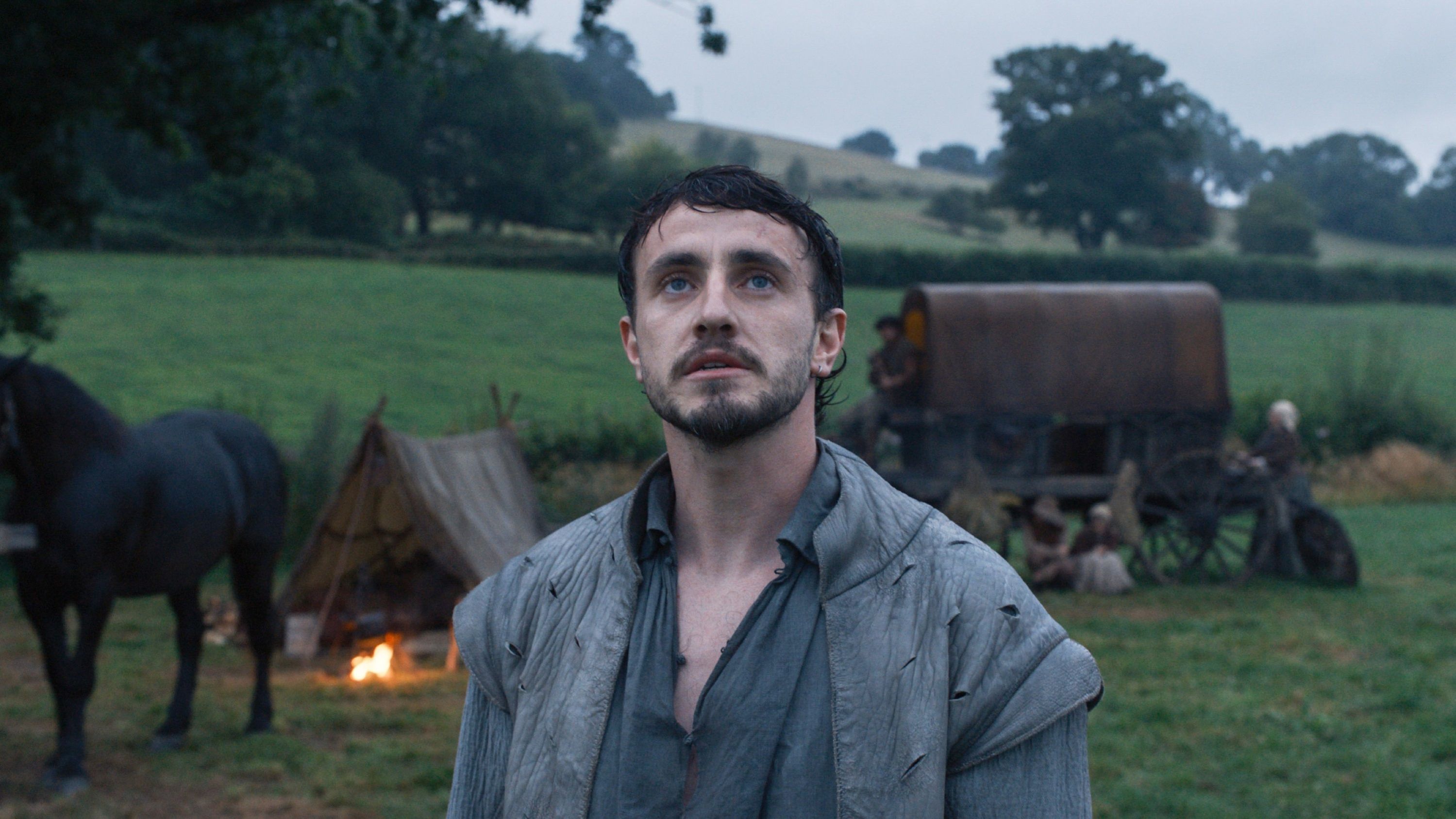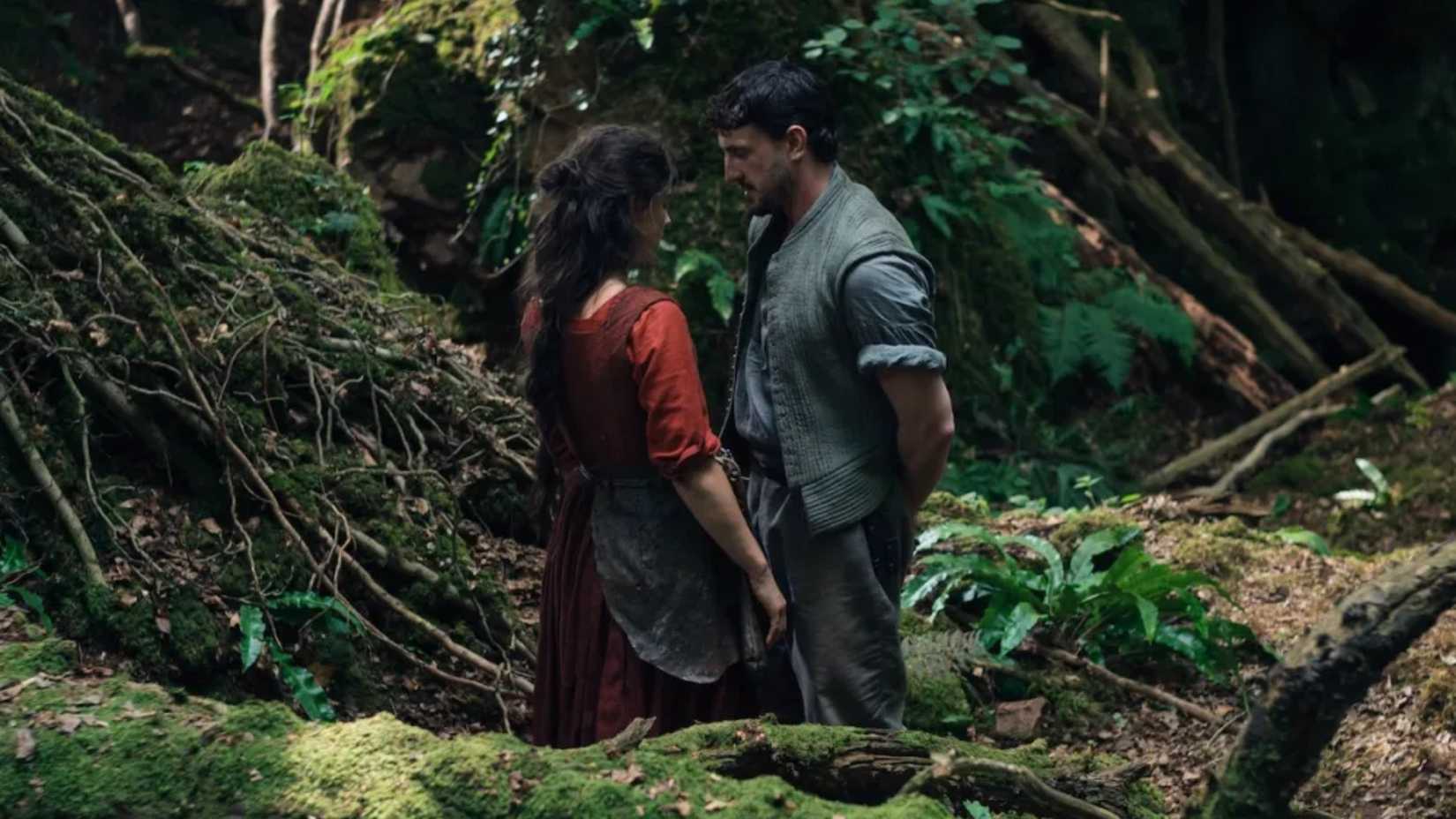
Chloé Zhao’s film, Hamnet, closely follows Maggie O’Farrell’s 2020 novel of the same name—O’Farrell even helped write the screenplay. However, the film adds something the book doesn’t: direct quotes from Shakespeare himself.
The story’s main character is usually called “the Husband,” but it’s clear Agnes has married a young William Shakespeare. This connection is central to the plot, exploring how the death of their son, Hamnet, might have inspired Shakespeare to write Hamlet a few years later. The novel deliberately avoids naming him to keep the focus on Agnes’s perspective and to portray him as a person, not just the famous playwright.
The film generally follows a familiar pattern, but it occasionally throws in quotes from Shakespeare’s most famous plays – often at the most predictable times. For example, after a date with Agnes, the young William Shakespeare recites a line from Romeo & Juliet as if he’s just thought of it. Later, he dramatically delivers Hamlet’s “To be or not to be” speech while considering jumping into the river. This feels similar to the tired trope in music biopics where a singer is inspired by someone accidentally saying the lyrics to their future hit song.
This scene feels out of place in an otherwise powerfully emotional film. However, along with a couple of others, it introduces a key idea that ultimately drives the meaning of the ending in Hamnet.
In Hamnet, Recitation & Art Have Their Own Power

I was deeply moved by how the book Hamnet connects to Hamlet – it really feels like Shakespeare was imagining what it would be like to lose his son, and almost became his son’s ghost in the play. The film keeps that detail, which is powerful. But the director, Zhao, isn’t just retelling the story; she’s building on what the author, O’Farrell, originally suggested, adding some really interesting new layers to the idea.
I was really struck by Agnes in the beginning of Hamnet. The author keeps repeating this almost like a prayer, a little rhyme Agnes learned as a child to help her remember how to use a specific plant for healing. It felt so important because Agnes actually asks her brother to say it with her, like they’re trying to bring something to life just by speaking the words together. It gave me a strong sense of her power and connection to the natural world.
I’ve always been struck by how Agnes dealt with loss. When her hawk died, she taught her children to send wishes up to the sky, imagining the bird would carry them to heaven. It was beautiful, and later, as Hamnet was dying, a bird actually appeared above him – it felt so significant. I think the hawk, and the herbal chants she uses, aren’t about magic, but about finding a way to connect with those we’ve lost. It’s like their spirits remain close, offering comfort and guidance whenever we remember them and reach out in our hearts. Agnes always seemed to have a way of keeping their memory alive.
The second aspect of the story focuses on the husband and his writing. The novel Hamnet portrays Shakespeare’s creative process as a direct expression of his emotions. To make this believable, the story emphasizes a clear connection between his life and his work. For example, Romeo & Juliet is presented as being inspired by his own youthful romance, while Hamlet stems from the intense grief he felt over the loss of his son.
Before the husband performs Hamlet’s famous speech on the dock, the film shows him practicing it with his actors. He becomes frustrated with the young actor playing Hamlet, scolding him for simply saying the lines without feeling them. The husband then delivers the lines himself, powerfully conveying the emotion behind the words. This scene highlights that Shakespeare’s writing truly comes alive when the actor doesn’t just recite the words, but genuinely feels them.
Hamnet’s Finale Turns Private Grief Into A Collective Experience

The final performance of Hamlet in the film combines William and Agnes’s approaches, resulting in something deeply moving. Similar to the novel, Agnes understands the play is William’s attempt to bring their son, Hamnet, back to life, and she views it through that lens. The live performance feels like a sacred retelling of Shakespeare’s words, connecting William’s feelings and Hamnet’s memory – a connection the film portrays directly.
Zhao’s production of Hamnet reveals more of the story’s emotional core than the novel does, thanks to the added dimension of live performance. While the book shares a deeply personal connection to Hamlet between Agnes and her husband, the play extends that feeling to the entire audience. The moment Hamlet speaks his final lines and Agnes reaches out to the actor resonates with everyone watching, creating a shared experience of grief. The play doesn’t just bring the story of the boy back to life and express his parents’ sorrow; it allows the audience to connect with and feel the weight of a loss they haven’t personally experienced.
Under the right circumstances, Zhao’s film has a similar effect. Watching Hamnet in a full theater, you might find yourself, or those around you, moved to tears alongside Agnes and the other characters. The extended Hamlet performance within the film is intentional—it allows the audience to share an experience similar to that of the original Hamlet’s viewers, making the film a tribute not just to art, but to the power of watching something together.
Read More
- Золото прогноз
- FTN/USD
- Прогноз криптовалюты CRV: прогнозы цены CRV
- Прогноз криптовалюты USD1: прогнозы цены USD1
- Прогноз нефти
- Йена обгонит южнокорейскую вону? Эксперты раскрыли неожиданный сценарий
- Доллар обгонит бразильский реал? Эксперты раскрыли неожиданный сценарий
- Прогноз криптовалюты IP: прогнозы цены IP
- Disney Announces Hulu Phaseout Window
- Exclusive Brilliant Minds Season 2 Clip
2025-11-28 16:01